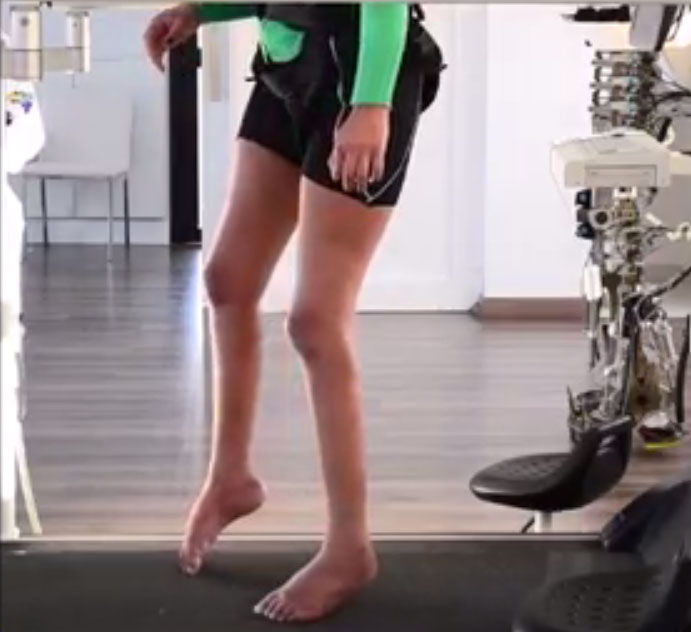In Surprise Recovery, Paralyzed Patients Move After Using Brain Devices

Several patients who had been paralyzed in their lower limbs for years have now regained some feeling and movement in their limbs, after learning to control a robotic exoskeleton with their brain, a new study says.
The findings were unexpected — researchers had been training the patients to use so-called brain-machine interfaces, including the robotic exoskeleton, with the hope that the patients could one day use the machines to help them walk again.
But the training appears to have had additional benefits: After a year, the patients experienced improvements in their ability to perceive sensations of touch below their spinal cord injury, and regained some control over muscles in their lower limbs, the study found.
In fact, out of the eight patients in the study, four experienced changes in their muscle control that were significant enough to upgrade their diagnosis from "complete paralysis" (when people have no control over the muscles below their spinal injury) to "partial paralysis" (when people have some control over these affected muscles.)
"We couldn't have predicted this surprising clinical outcome when we began the project," said Dr. Miguel Nicolelis, a neuroscientist at Duke University who conducted the study as part of the Walk Again Project in São Paulo, Brazil. [Bionic Humans: Top 10 Technologies]
The patient with the biggest improvements was a 32-year old woman who had been paralyzed for 13 years. At the start of the study, she was not able to stand using braces at the start of the study, but by the end of the study, she could move her legs on her own while her body weight was supported with a harness.
The findings are the first to suggest that the long-term use of brain-machine interfaces could lead to partial neurological recovery, even in patients with complete paralysis, the researchers said.
Sign up for the Live Science daily newsletter now
Get the world’s most fascinating discoveries delivered straight to your inbox.
In the study, the patients who had been paralyzed for five to 13 years learned how to use brain-machine interfaces, which are systems that translate brain signals into commands, and move a device such as a prosthesis. The patients started out by learning to control an avatar in a virtual reality environment. Later, they moved on to more challenging equipment, including walking devices that used a harness to support patients' weight as they developed strength and the proper gait.
Eventually, after months of training, the patients were able to use the mind-controlled robotic exoskeleton. This is the same exoskeleton that a paralyzed man used to kick the first ball of the 2014 World Cup in Brazil.
The patients also wore a sleeve that delivered feedback, in the form of vibrations to their forearm that were in sync with the rolling of the robotic feet on the ground. This was done to enhance their experience of walking, making their brains feel more like they were really walking by themselves, the researchers said.
The researchers said they think the brain-machine interface training, along with the sensory feedback helped the patients to re-engage the spinal cord nerves that survived their trauma. Previous studies have shown that patients with complete paralysis may still have some spinal nerves intact, Nicolelis said.
"Over time, training with the brain-machine interface could have rekindled these nerves," Nicolelis said. "It may be a small number of fibers that remain, but this may be enough to convey signals from the motor cortical area of the brain to the spinal cord."
The researchers plan to continue their evaluation of the patients in the study and to start a new study of patients with more recent spinal cord injuries to see if this second group of patients can respond more quickly.
The study is published today (Aug. 11) in the journal Scientific Reports.
Original article on Live Science.

Rachael is a Live Science contributor, and was a former channel editor and senior writer for Live Science between 2010 and 2022. She has a master's degree in journalism from New York University's Science, Health and Environmental Reporting Program. She also holds a B.S. in molecular biology and an M.S. in biology from the University of California, San Diego. Her work has appeared in Scienceline, The Washington Post and Scientific American.











